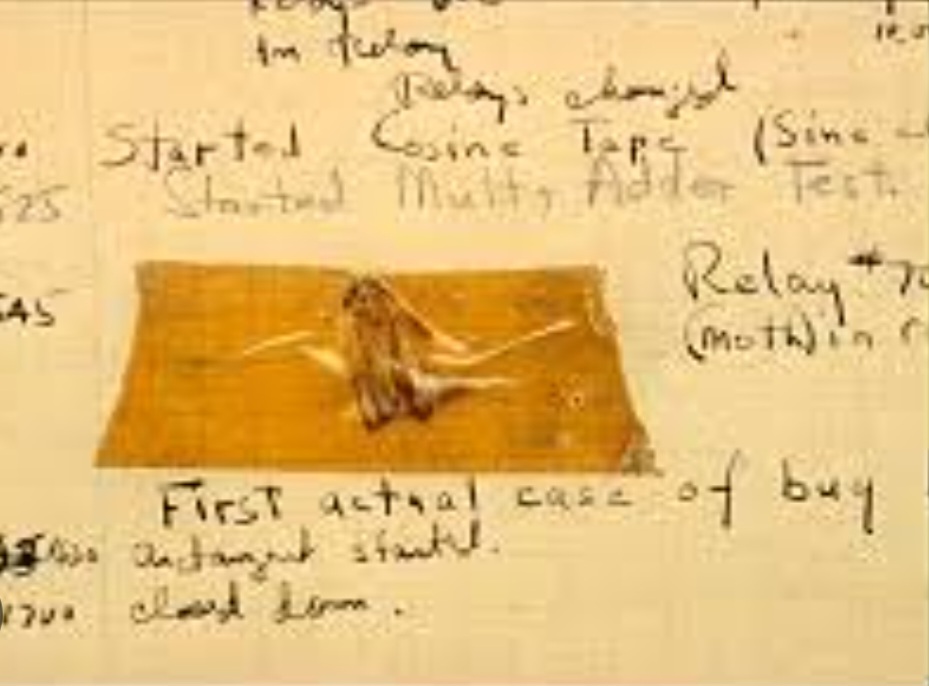The Original Bug Was an Actual Bug
 Nicsady Ngwenya
Nicsady NgwenyaTable of contents

Ah, bugs. As programmers, we all know them, dread them, and sometimes even dream about them (or, more accurately, the sleepless nights they cause). But did you know that the term "bug" in programming originated from an actual, living bug? Yup, we're talking about the kind with wings and tiny legs.
Let’s take a trip back to 1947, when computers were room-sized giants and debugging meant more than just staring at lines of code.
》The Tale of the Moth That Started It All
It was a sunny day in 1947, and a team of engineers at Harvard was hard at work on the Mark II, one of the earliest electromechanical computers. The Mark II was an impressive machine, but it didn’t come without its quirks. In fact, on this particular day, it suddenly malfunctioned, grinding to a halt. The culprit? A little moth that had somehow found its way into the circuits and decided to take a nap between the relays.
When the engineers opened up the Mark II, they found the moth and carefully removed it. The lead engineer (legend has it, Grace Hopper, though she humbly gave credit to the team) taped the moth into the logbook with a note: "First actual case of bug being found." And just like that, the term “debugging” was born, not out of a metaphor, but out of a literal bug extraction.
》Imagine If We Still Had Actual Bugs Today
Let’s just take a moment to appreciate the irony here. Imagine today, if every time we encountered a "bug" in our code, it involved tracking down a tiny insect stuck in the CPU. Or worse, what if every error had its own literal pest?
• Null Pointer Exceptions? Spiders crawling through your stack traces.
• Syntax Errors? Ants that refuse to follow the line.
• Runtime Errors? Cockroaches—resilient and showing up at the worst possible moment!
If only our current bugs were that easy to fix! A little tweezers action, a flick of the wrist, and voila—problem solved. No stack overflow, no hours lost, just a bug-sized eviction notice.
》Why “Bug” Is Still So Relevant
Let’s face it: programming bugs might not have wings, but they sure do have a way of sneaking in undetected, disrupting our flow, and making us wish we could just “squash” them once and for all. They may not be real insects, but they share the same knack for showing up where they're not wanted.
But here's the funny part: modern bugs can sometimes feel even more elusive than a tiny moth in a 1940s computer. They're hidden deep in nested loops, unexpected logic paths, and that one forgotten semicolon that somehow takes down the entire app. And unlike the poor moth that started it all, today’s bugs usually can’t be fixed with a pair of tweezers.
》Modern Bugs: The Legacy Lives On
Although the original “debugging” process was literal, the term stuck around, and for good reason. Every programmer today knows the struggle of debugging—whether it's combing through 1,000 lines of code or just trying to figure out why “Hello, World” won’t print. Debugging has become a rite of passage for all of us in tech.
Grace Hopper and her team probably never imagined that this incident would become a cornerstone of programmer culture. So, the next time you're tackling a bug at 3 AM, just remember: you're not just fixing code—you’re carrying on a legacy that started with a tiny moth and a massive computer. In a way, every debug session is a tribute to the "First Bug" and the engineers who found it.
》Fun Facts About Bugs and Debugging
Fun Fact #1: “Bug” as a term for technical mishaps actually existed before the moth incident—it dates back to Thomas Edison’s time. But this was the first documented case of an actual bug!
Fun Fact #2: The original moth is still preserved and on display at the Smithsonian Museum in Washington, D.C., stuck in that logbook. Now that's what you call immortalizing your work!
Fun Fact #3: Grace Hopper went on to become a pioneer in programming and helped develop COBOL. If there was a Hall of Fame for iconic bugs and programmers, she’d be in it.
》Final Thoughts: Long Live the Legacy of Bugs
The story of the first bug is more than just a quirky piece of history—it’s a reminder that even the earliest programmers faced unexpected challenges. Today, we may not have moths hiding in our computers (unless you work in a very outdoorsy office), but we still have plenty of bugs keeping us on our toes.
So next time you’re in the trenches of a bug hunt, just remember the original debugging tale and give a little nod to Grace Hopper and the Harvard team. And maybe, just maybe, that next bug will feel a tiny bit less annoying. (No promises, though!)
Subscribe to my newsletter
Read articles from Nicsady Ngwenya directly inside your inbox. Subscribe to the newsletter, and don't miss out.
Written by
